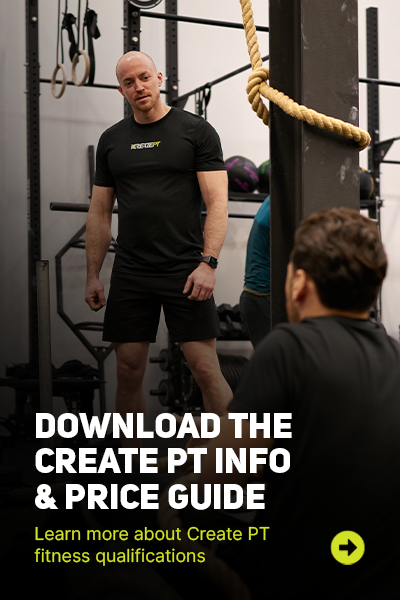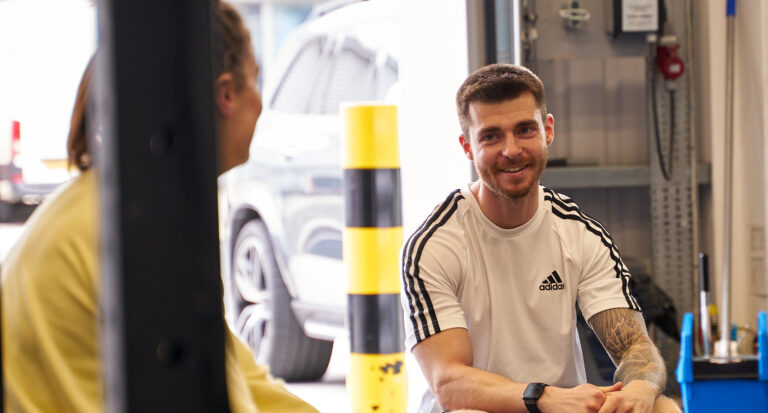Physiotherapist or personal trainer?
I’ve owned my gym for nearly 8 years now, and in that time we’ve had countless PT’s through our doors. The staggering array in quality is what led Josh and I to set up Create PT, but that’s another topic! Since opening we’ve also rented a treatment room out to a great local physiotherapy clinic, they’ve employed a number of therapists over the years with a range of specialisms and have helped me out with training injuries a few too many times to count. Suffice to say, I’ve had a fair bit of exposure to both sectors.
I may have been fortunate with the physio’s I’ve dealt with, but from my experience the standard was consistently excellent. The same unfortunately cannot be said for the PT’s I’ve worked with…some have been brilliant, however there have been a lot that (possibly through little fault of their own) were not of a good enough standard to be offering health advice to the public.
There are obviously a range of soft skills that are intrinsic to the individual that help determine success as a PT, but the fundamentals of how to write programs, train clients and the basic understanding of anatomy, nutrition and other key skills should have a consistent baseline across the board. Again, I’m digressing into what makes a good PT course provider, but that aside, the consistency in the quality of personal trainers I’ve met is far from that of the physiotherapists I’ve met.
It goes without saying that physio’s have a far deeper understanding of human anatomy and how to diagnose and rehab injuries, in fact the majority of a physio’s work is outside the scope of practise of a PT. Afterall to become a physio you have to complete a degree and continue with professional development once qualified, whereas to become a PT you can qualify in as little as 6 weeks and there is no mandated requirement for CPD (continual professional development).
I don’t want to sound too scathing about our industry, to reiterate there are tons of excellent PT’s out there, a few I have been trained by, some I work with and a lot I know personally, however I think it is the general standard of the industry that can give the impression that personal trainers do not possess adequate knowledge or experience for physio’s to feel comfortable passing their clients on.
A good physio should not want their clients to keep coming back to them. With some exceptions, if you keep going back to your physio for the same injury then either they’re not doing a good job or you’re not doing the prescribed homework. With this in mind I’m certain that most physios would love to have a reliable PT they know they can call on to refer clients to once they no longer require clinical assistance.
I see this as a virtuous cycle, clinging onto a client when they should be referred (in either direction) is almost definitely to the detriment of the client, both financially and health-wise. Instead, a PT is much more likely to retain a client long term if they refer them to a trusted physio when an injury is beyond their remit, because the right physio will help to treat the injury then recommend that they go straight back to their PT.
This cycle can be improved further by the physio & PT communicating to ensure the PT helps with the rehab by training what should be trained and avoiding problem areas. This is a win-win-win, the physio has done their job, the PT retains their client, and the client gets the best outcome for their health and wealth.
Obviously improving communication between the two professions is a long game and one that may only come about as a result of improving the standard of PT’s across the board, which is also a long game, but one we are whole-heartedly doing our best to contribute towards. There are however smaller steps that can be taken in the meantime. It may not always be necessary for PT’s to refer a client to a physio as soon as they notice an injury. By better educating fitness professionals we can help them learn how to spot injuries, help with rehabilitation and keep their clients training when injuries unfortunately occur.
At Create PT we have partnered with the team at Physio Matters to provide a range of courses to address this exact problem. There are three courses teaching you the skills to adapt to painful movements, incorporate injury prevention strategies and keep your clients training. The courses are on the spine, the upper limb and the lower limb covering topics such as problems with shoulder elevation, back pain, and troubleshooting movements such as the squat and deadlift.
We thoroughly recommend checking out all three courses, they’ll not only help you to help your current clients and improve retention, but could add a few extra strings to your bow enabling you to offer services such as injury prevention programmes and training clients with arthritis.
You can find each of them here:
Overcoming Gym Injuries – The Spine
Overcoming Gym Injuries – Lower Limb
Overcoming Gym Injuries – Upper limb
We’d also recommend having a look at the other services Physio Matters have on offer, they’re predominantly focused on high quality clinical CPD but also run some great events and have a brilliant podcast hosted by their charismatic leader Jack Chew.
If you’d like any more information on what I’ve discussed here feel free to contact me at info@creatept.com and if you have any physio specific questions, Jack is happy for me to pass them along to him so fire away.







